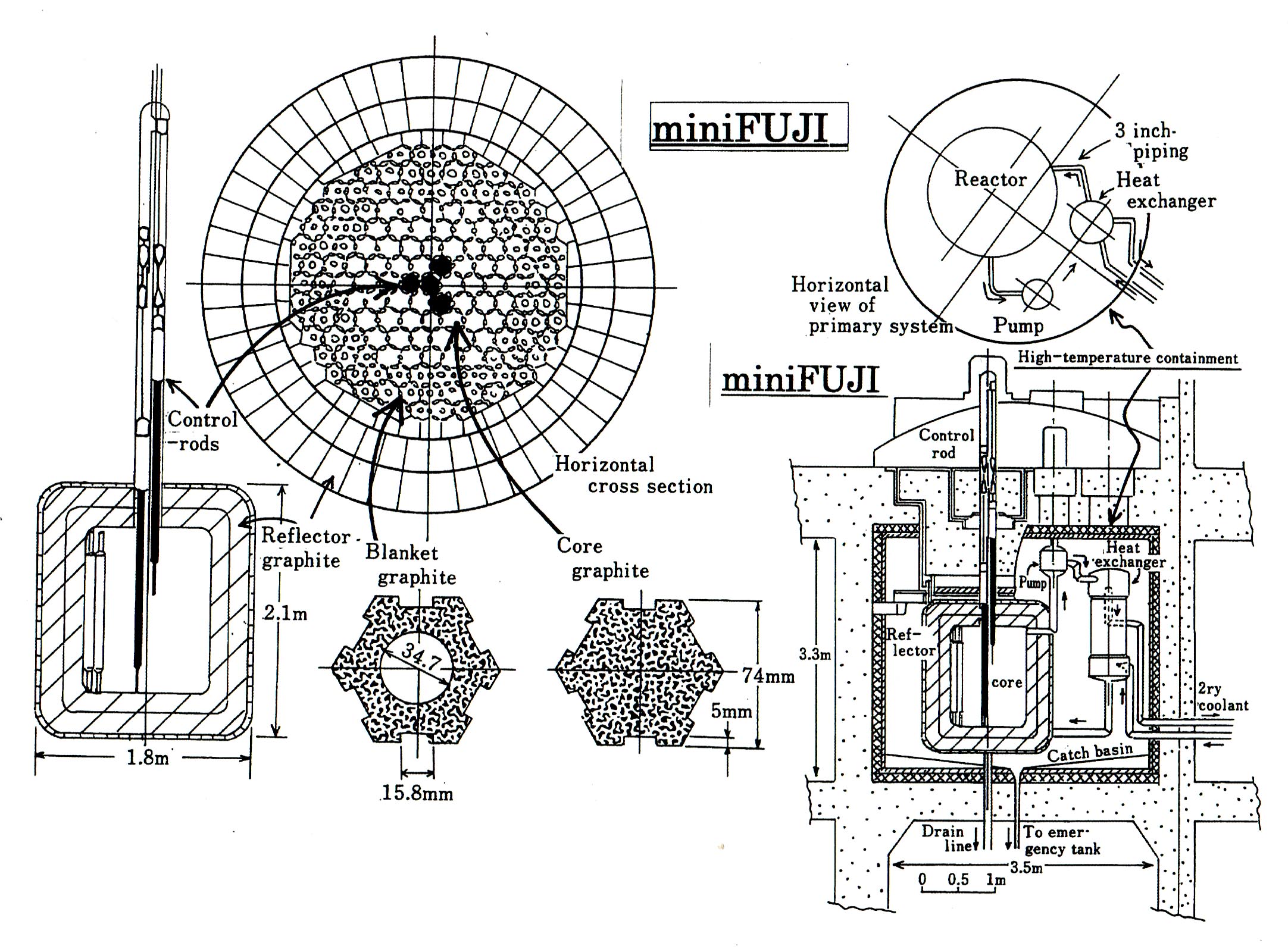IThEMS expects further technology development in such areas as:
1 Fuel-Salt loop technology including necessary component tests,At last report, IThEMS was also looking for an American business partner, but no possible American partner is mentioned in the IThEMS Outlook report. IThEMS Outlook does report the Mini FUJI business plan.
2 Coolant-salt loop technology including necessary component tests,
3 Structural material development and some main components fabrication,
4 Main components design, fabrication and tests,
5 Other relating items technology development.
The plan calls for a Mini-FUJI Reactor R&D investment of $300 million over a 6 year period of time, with sales beginning in the 5th year. By the 7th year sales are anticipated to reach the level of 50 units a year, and that is expected to reach 200 unites a year by the 10th year. Mini-FUJI reactors are expected to produce 10 MWe and sell for $60 million. The initial manufacturing cost is anticipated to be approximately $40 million, and that figure is expected to drop to $30 million as production rises. Sales are anticipated to reach $12 Billion by the 10th year, with an assumed gross profit from sales of 30%. Thus the potential after tax income of IThEMS would run to $2.5 billion. And this would be before IThEMS brings its major product, the 200 MWe FUJI reactor to the market.
Power from the Mini-FUJI is expected to cost $0.061 per kWh to produce, with an anticipated retail cost of $0.11 per kWh in the United States, and $0.22 per kWh in Japan. It should be noted that the mini-FUJI is a micro scale nuclear generation unit that is not intended to produce base load electricity for the grid. The FUJI is intended to produce base load electricity, and can be expected to sell for considerably less per kWh than the Mini-FUJI, yet it still could make a very large profit. Projecting sales figures out another decade, IThEMS could have $200 billion a year in sales, and profits as high as $60 billion, making it, if everything goes according to plan, the largest energy business in the world.
Not I am not claiming that IThEMS will end up as a $200 billion a year business, only that it could if everything goes according to plan. Things, of course, seldom proceed as planned, without some hitches, but IThEMS does have prospects.










2 comments:
Using ORNL technology as a template to produce Mini Fuji reactor is very wise move by Dr Furukawa and his team. If they build successful MSR running in large portion on Thorium and demonstrate it’s safety with great energy potential for low cost, it is certain that 200 billion in sales is too modest figure. By the time the Mini Fuji prototype is running it will be pretty clear to almost anyone that renewable energy sources are at the end of it’s rope, hence there will be rush to build Thorium Energy Converters based on Molten Salt technology and other technology such as India’s Heavy Water Thorium Reactor. As Shippingport Experiment demonstrated even the Light Water Reactor has the potential to extract energy from Thorium. CANDU has the similar or better ability due to it’s Heavy Water Moderator. Thorium is already used in light water reactor fuel mix to increase the performance in existing reactors.
Nevertheless, I am a firm believer that Molten Salt technology has the best merit for nuclear safety and low cost electric power production, therefore, Dr Furukawa’s team has a good chance of success.
Hi Charles,
I am writing an article describing the current state of plans to build LFTR's and other thorium based reactors. Do you know whether IThEMS have made progress with their funding and are they still targetting 2016 for their mini-FUJI?
Reagrds
John Preedy
Post a Comment